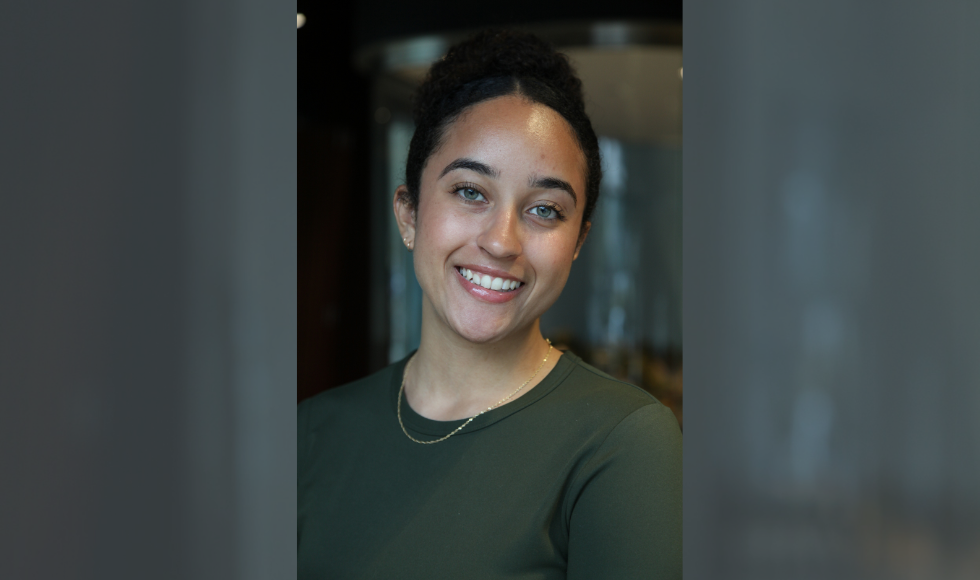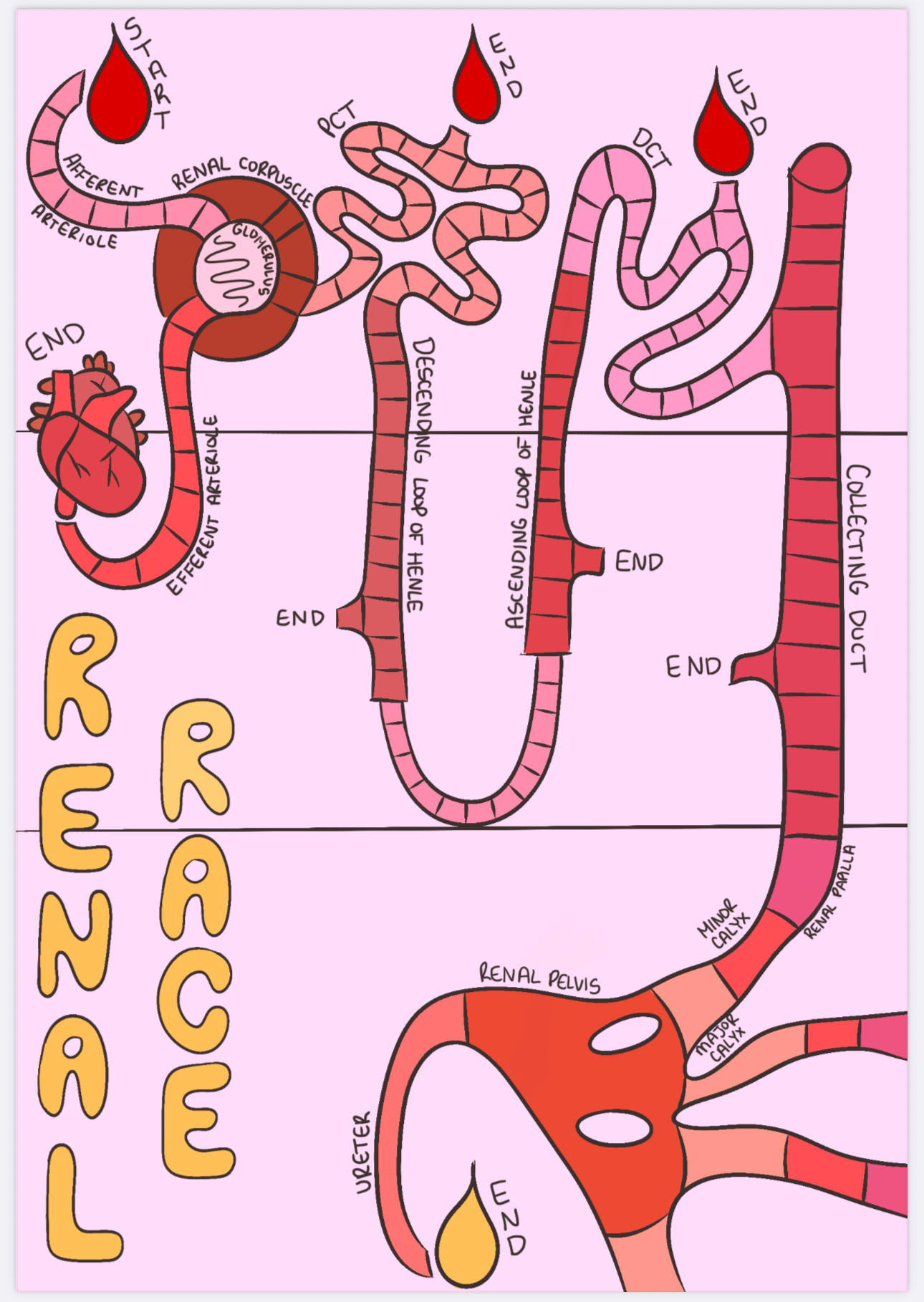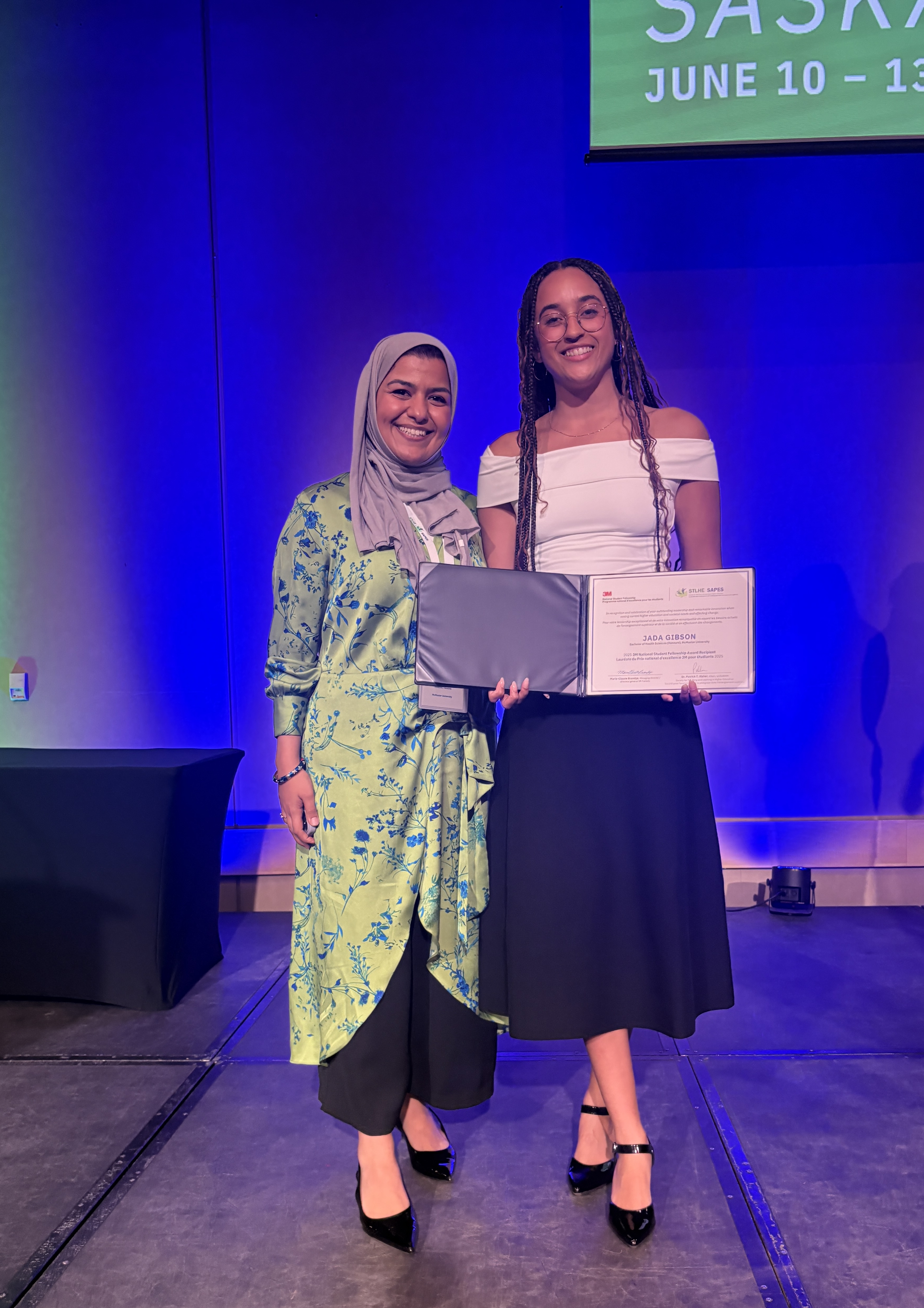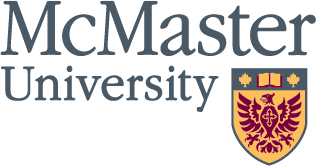How health care, teaching, and art can work together

Jada Gibson’s journey includes making board games for medical students, co-creating a new course at Mac, and a national fellowship on educational leadership.
BY Caelan Beard
July 9, 2025
Jada Gibson wasn’t sure how to combine her love for health care, teaching, and art — until a professor at McMaster showed her it was possible, kicking off a journey that would not only allow Gibson to pursue all her interests, but help other students learn, too.
The recent Honours Health Sciences graduate had had a lot of different interests when she was in high school: She liked learning about the human body. She tutored throughout high school, and loved helping students reach “aha” moments. She also really liked art class.
But “when you’re in high school, there’s a lot of pressure to pick something,” Gibson said. She decided to follow the health care route. “I was content with that. But part of me did kind of feel like I was leaving something behind.”
During her second year, she still really enjoyed what she was studying — but anatomy was really difficult.
“There’s a lot of structures to memorize, a lot of things to know,” Gibson said. “As I was learning those things, I also became interested in learning how to learn, and learning how students like me can go about memorizing these concepts in a way that makes sense.”
That interest spurred her to join the anatomy lab’s education program as a research student, working under experts Bruce Wainman and Yasmeen Mezil.
Gibson noticed that Mezil brought a lot of art concepts into class, using drawings to help teach students.
“That was such a big moment for me,” Gibson said. Mezil was teaching medical students using art: combining all three of Gibson’s passions in a powerful interdisciplinary way. “It proved to me that I am able to combine my interests outside of medicine into medicine… she was the kind of a representation I needed as a student and proved to me that I can choose [more than one] and pursue them simultaneously.”
“It really opened my eyes to the career possibilities out there,” Gibson said. “I can like science and art and education… it helped me be lot less limiting when I was able to see someone like her doing what I wanted to do.”
“I just really looked up to her.”
Bringing art into learning
Mezil quickly became Gibson’s mentor, and they worked on a couple of projects together during Gibson’s third and fourth years.

For her third-year project course, she designed interactive board games to support McMaster medical students in mastering anatomy concepts: Renal Race, a trivia board game teaching the reabsorption sites of physiologically important molecules, and Pathology at Play, a problem-solving game where you use clues to discover a pathology, with a setup like clinical tutorials.
“Studying can be kind of a lonely activity sometimes,” Gibson said. She wanted to find a way to help students learn, while making it more collaborative and social.
The board games were a hit with medical students during beta testing. Currently, a team is continuing the work with a learning study to investigate whether the games are effective as well as fun.
In the anatomy lab, for her fourth-year thesis project, Gibson also collaborated with a team of writers and artists to develop an open-access anatomy resource. The team founded the resource and developed it from scratch, creating a visually rich, student-informed learning tool designed to demystify anatomy for learners of all backgrounds. Gibson was a biomedical illustrator for the project, applying her artistic background into academics to help students learn.
She wants to reduce barriers in science education, and help students see themselves reflected in the materials they engage with. “As an illustrator, I am able to reflect on which diagrams I thought would have helped me understand when I struggled to learn anatomy,” Gibson said. She plans to volunteer for the project next year as well, as an illustrator and editor, to continue the development of the online textbook.
Another way she’s helping to shape a supportive and transformative learning environment for students was through a project she took on the summer before fourth year, co-creating a new course with Mezil through the MacPherson Institute’s Student Partners Program (SPP).
The program provides undergraduate and graduate students with paid opportunities to work with faculty, instructors and staff to enhance teaching and learning at McMaster. Gibson got to attend workshops where she learned about designing courses, how to align course objectives with intended learning outcomes, and different types of assignments and when to use them.
The best part was applying her learning in real time. “I would do these workshops and then I would go and work on designing the course with Dr. Mezil,” Gibson said. “It was a really effective way for me to learn and apply what I was learning right away.”
Mezil, Gibson, and School of the Arts professor Briana Palmer ended up creating a new interdisciplinary course called ‘Decolonizing Anatomy through Arts Practice.’ The course first ran in Winter 2025 – with Gibson as the teaching assistant.
Watching students in the course she’d created, giving them feedback, and seeing them learn gave Gibson a sense of deep fulfilment unlike anything she’d experienced before.
“It was absolutely surreal,” she said.
Between the students’ assignments, their conversations, and watching them engage with guest speakers, “it became evident that they were learning,” Gibson said.
Not only that – but the students seemed truly at ease in that learning space and were willing to take risks. “They really felt comfortable asking questions and talking with one another and probing the guest speakers to learn more,” Gibson said. “They were really taking control of their own learning in that way.”
“That was really special for us to see,” she said. “It showed us that this is a topic that students are interested in. They want to learn more about it.”
The course will run again next year.
Now that she’s graduated, Gibson’s next step will have her continuing to make an impact – she was recently selected as a 3M National Fellow by the Society for Teaching and Learning in Higher Education (STLHE) and 3M Canada.
It’s a prestigious fellowship– Gibson is one of 10 outstanding post-secondary students recognized from across Canada. The fellowship started with a week in Saskatoon in June to participate in the 2025 STLHE Annual Conference and meet the other fellows.

Over the next year, the fellows will work on a collaborative project to support educational leadership across Canada – making Gibson part of a national community of changemakers who are dedicated to reimagining education in inclusive and transformative ways.
“It’s going to be really nice to hear all of [their] perspectives and learn more, and work on something special with this group of people,” Gibson said.
And after that? Gibson is staying open.
“Going from being a full-time student to being a little more up in the air, that was creating a lot of anxiety for me. I like to plan. I like to know what I’m doing,” she said.
But her time at McMaster has shown her that there are a lot of options, and a multitude of pathways to combine her passions into something impactful.
“It feels a little bit scary to have not as much certainty with what I’m doing next,” she said. “But I’ve kind of learned to channel that nervousness into excitement for the possibilities that I have in my future.”


